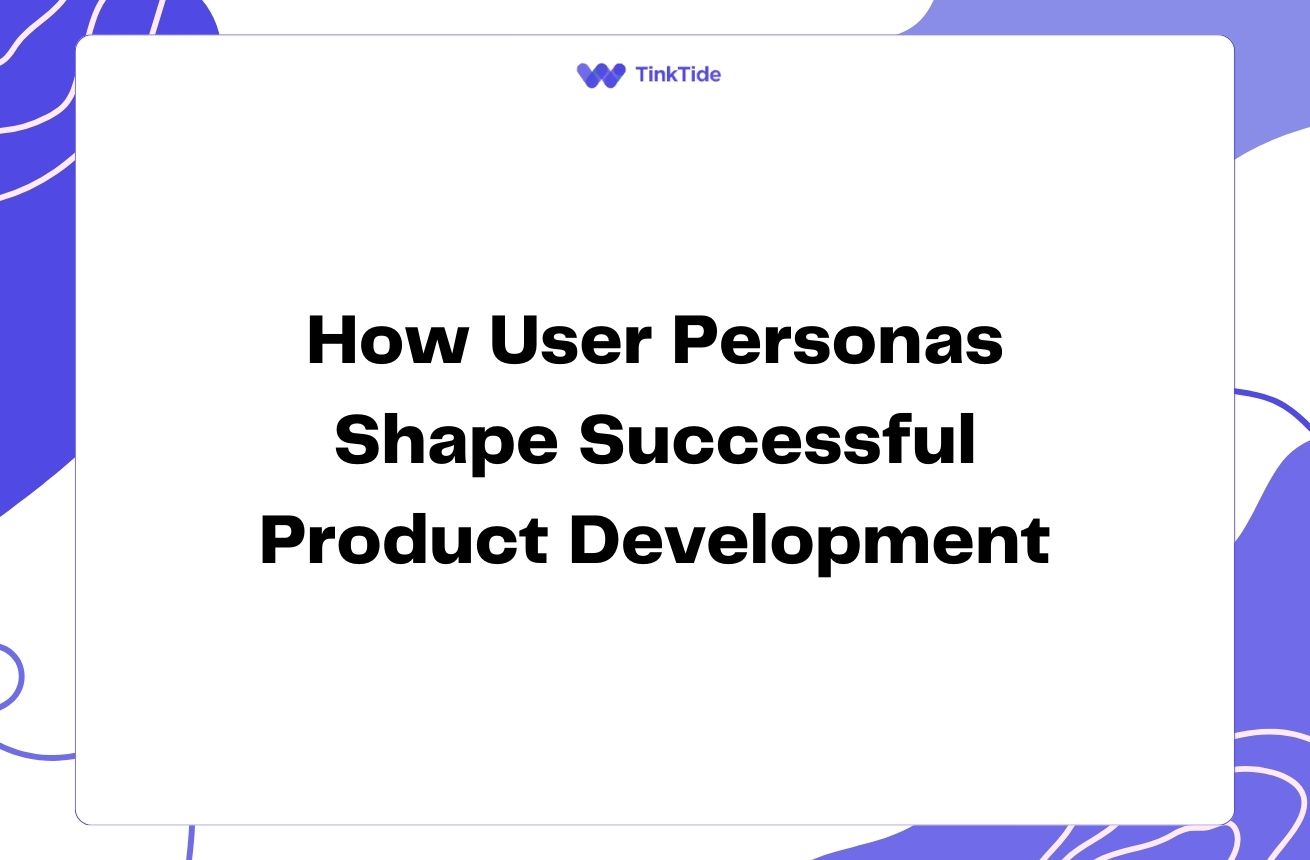Unleashing Innovation: Ideation Techniques for SaaS Success
The Power of Ideation in SaaS
In the fast-paced world of Software as a Service (SaaS), innovation is the key to staying ahead of the competition. Effective ideation techniques can help you generate groundbreaking ideas that drive your SaaS business forward. Let's explore some powerful methods to spark creativity and fuel innovation in your SaaS company.
Ideation is the process of generating, developing, and communicating new ideas. For SaaS companies, it's crucial to continuously innovate to meet evolving customer needs and maintain a competitive edge. By implementing structured ideation techniques, you can tap into your team's collective creativity and uncover innovative solutions to complex problems.
According to a McKinsey study, companies that prioritize innovation during challenging times are more likely to emerge as market leaders. This underscores the importance of fostering a culture of innovation within your SaaS organization.
Let's dive into some effective ideation techniques that can help you drive innovation in your SaaS business.
Brainstorming: The Classic Ideation Technique
Brainstorming is a tried-and-true method for generating ideas quickly. In a SaaS context, it can be particularly effective for solving specific problems or exploring new feature ideas. To conduct a successful brainstorming session:
- Set a clear objective for the session
- Encourage all team members to participate and share ideas freely
- Use a digital whiteboard tool like Miro for remote teams
- Build upon each other's ideas to create more robust solutions
- Avoid criticism during the ideation phase to maintain a creative flow
Design Thinking: User-Centric Innovation
Design thinking is an iterative process that focuses on understanding users, challenging assumptions, and redefining problems. This approach is particularly valuable for SaaS companies looking to create user-centric solutions.
The design thinking process typically involves five stages: Empathize, Define, Ideate, Prototype, and Test. During the ideation phase, techniques like Worst Possible Idea can be used to overcome creative blocks and generate unconventional solutions.
By adopting design thinking, SaaS companies can develop products that truly resonate with their target audience, leading to higher user satisfaction and retention rates.
Companies like Airbnb have successfully used design thinking to revolutionize their user experience and drive innovation in their industry.
SCAMPER: A Structured Approach to Idea Generation
SCAMPER is an acronym that stands for Substitute, Combine, Adapt, Modify, Put to another use, Eliminate, and Reverse. This technique provides a structured framework for generating new ideas by encouraging you to think about your SaaS product or problem from different angles.
For example, you might ask: 'How can we substitute our current pricing model?' or 'Can we combine two features to create a more powerful solution?' This method can lead to innovative improvements in your SaaS offering.
The SCAMPER technique has been used by companies like Apple to continually innovate and improve their products. By applying this method to your SaaS business, you can uncover new opportunities for growth and differentiation.
To implement SCAMPER effectively, involve team members from different departments to gain diverse perspectives on your SaaS product or service.
Mind Mapping: Visualizing Ideas and Connections
Mind mapping is a visual ideation technique that helps you organize thoughts and explore connections between different ideas. For SaaS companies, mind mapping can be particularly useful when brainstorming new features or mapping out user journeys.
To create a mind map, start with a central concept and branch out with related ideas. Use colors, images, and keywords to make your mind map more engaging and memorable. Tools like MindMeister or XMind can help you create digital mind maps collaboratively.
Mind mapping can help your team visualize complex problems and identify innovative solutions that might not be apparent through linear thinking. It's an excellent tool for both individual and group ideation sessions.
Many successful SaaS companies use mind mapping to plan product roadmaps and explore new market opportunities.
Customer Feedback Loop: Innovating with User Insights
While not a traditional ideation technique, creating a robust customer feedback loop can be a powerful source of innovative ideas for SaaS companies. By actively listening to your users and analyzing their behavior, you can uncover valuable insights that drive product improvements and new feature ideas.
Implement tools like Hotjar for user behavior analysis or UserVoice for collecting and prioritizing user feedback. Regularly review this data with your team to generate ideas for enhancing your SaaS offering.
Companies like Dropbox have successfully used customer feedback to drive their product development and stay ahead of user needs. By making customer feedback a core part of your ideation process, you can ensure that your innovations are aligned with market demands.
Remember to close the feedback loop by communicating with users about how their input has influenced your product decisions. This fosters a sense of community and encourages ongoing engagement.
Implementing Ideation Techniques in Your SaaS Company
To make the most of these ideation techniques, consider the following steps:
- Schedule regular ideation sessions with cross-functional teams
- Create a safe environment where all ideas are welcomed and explored
- Use a mix of techniques to keep the ideation process fresh and engaging
- Document all ideas, even those that seem impractical at first
- Establish a process for evaluating and prioritizing ideas post-ideation
- Allocate resources for prototyping and testing promising concepts
Fostering a Culture of Continuous Innovation
To truly drive innovation in your SaaS company, it's essential to foster a culture that encourages and rewards creative thinking. This involves more than just implementing ideation techniques; it requires a shift in mindset across the entire organization.
Encourage experimentation and risk-taking by celebrating both successes and failures as learning opportunities. Provide time and resources for employees to work on passion projects or explore new ideas outside their regular responsibilities.
Consider implementing an innovation program like Google's 20% time, where employees can dedicate a portion of their work week to projects of their choosing. This approach has led to the development of successful products like Gmail and Google News.
By creating an environment that nurtures creativity and values innovation, you'll be better positioned to leverage the full potential of your team's ideas and drive your SaaS business forward.
Common Questions About Ideation in SaaS
As you explore ideation techniques for your SaaS company, you may encounter some common questions. Let's address a few of them:
How often should we conduct ideation sessions?
The frequency of ideation sessions can vary depending on your company's needs and goals. However, it's generally recommended to hold regular sessions, such as monthly or quarterly, to maintain a consistent flow of ideas. Additionally, you might want to schedule ad-hoc sessions when facing specific challenges or opportunities.
How can we involve remote team members in ideation?
With the rise of remote work, it's crucial to adapt ideation techniques for virtual environments. Use collaborative online tools like Miro, Mural, or Google Jamboard for virtual brainstorming. Video conferencing platforms with breakout room features can facilitate small group discussions. Asynchronous ideation methods, such as shared documents or idea management platforms, can also be effective for distributed teams.
What's the best way to evaluate ideas after an ideation session?
Develop a structured evaluation process that aligns with your company's goals and resources. This might include criteria such as potential impact, feasibility, alignment with company strategy, and customer value. Consider using a scoring system or matrix to objectively assess ideas. Involve stakeholders from different departments in the evaluation process to gain diverse perspectives.
How can we encourage participation from all team members during ideation?
Create a safe and inclusive environment where all ideas are welcomed. Use techniques like round-robin brainstorming or anonymous idea submission to ensure everyone has a chance to contribute. Encourage quieter team members by asking for their input directly or using written ideation methods. Recognize and appreciate all contributions to foster a culture of active participation.
Should we include customers in our ideation process?
Involving customers in ideation can provide valuable insights and lead to more user-centric innovations. Consider hosting customer advisory boards, conducting co-creation workshops, or using idea submission platforms to gather input from your user base. However, balance customer input with your company's vision and expertise to ensure that innovations align with your overall strategy and capabilities.
How can we measure the success of our ideation efforts?
Track metrics such as the number of ideas generated, the quality of ideas (based on your evaluation criteria), and the rate of idea implementation. Long-term success can be measured by the impact of implemented ideas on key business metrics like customer satisfaction, revenue growth, or market share. Regularly review and refine your ideation process based on these metrics and team feedback.
Additional Resources for SaaS Innovation
IDEO U: Design Thinking Course
Learn the fundamentals of design thinking from the pioneers at IDEO
The Lean Startup by Eric Ries
Explore lean methodologies for rapid innovation in startups and enterprises
InnovationManagement.se
A comprehensive resource for innovation management strategies and techniques
Mind Tools: Creativity Tools
A collection of creative thinking tools and techniques for problem-solving
Stanford d.school: Virtual Crash Course in Design Thinking
A free, hands-on introduction to design thinking principles and methods
Embracing Innovation for SaaS Success
In the dynamic world of SaaS, innovation is not just a buzzword—it's a necessity for survival and growth. By implementing these ideation techniques and fostering a culture of continuous innovation, you can unlock your team's creative potential and drive your SaaS business to new heights.
Remember that innovation is an ongoing process. Regularly review and refine your ideation methods to ensure they remain effective and aligned with your company's evolving needs and goals.
Start implementing these techniques today, and watch as your SaaS company transforms into an innovation powerhouse. The next big idea that revolutionizes your industry might be just one brainstorming session away!
Supercharge Your SaaS Innovation
Ready to take your SaaS innovation to the next level? Try our platform for streamlined ideation and collaboration.
Start Your Free Trial

